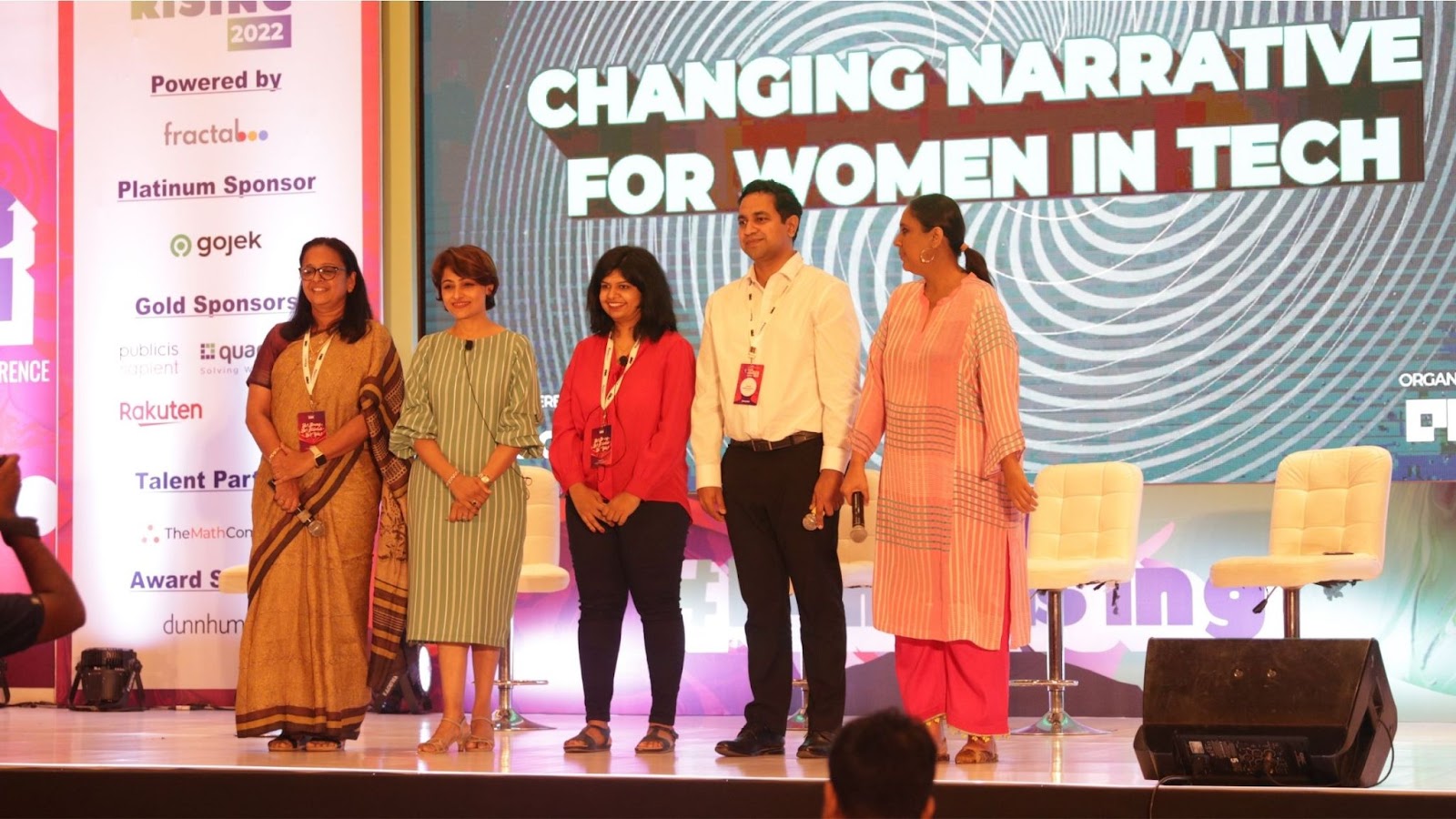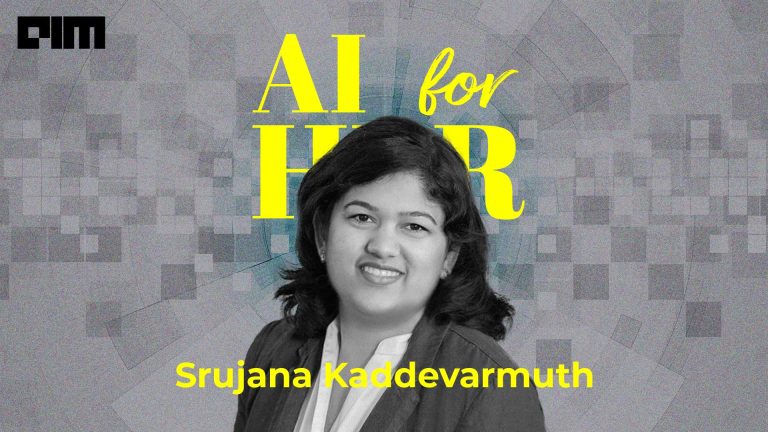At The Rising 2022, the panel discussion on ‘Changing Narrative for Women in Tech’ resonated with the audience in a big way. The session embodied the struggles women face in the patriarchal society, alongside discussing gender discrimination at work and other challenges and how they overcame them – breaking the glass ceiling.
Moderated by renowned journalist Barkha Dutt, the panellists included Manoj Madhusudanan, head of dunnhumby India; Shobha Bhagwat, data analyst manager at Gojek; Aashima Kumar, senior manager of data analytics at Publicis Sapient; Jaya Janardanan, COO at Indostar Capital Finance.
Watch all the recorded sessions of Rising 2022 here>>
A study shows how women continue to be underrepresented in the tech ecosystem. For instance, the tech giants – Amazon, Apple, Facebook, Google, and Microsoft – have only 34.4 per cent of women in their workforce. In this panel discussion, the panellist discussed how women could get into roles typically labelled as ‘not suitable for women’ and how individuals can change the narrative for women in tech.
Dutt opened the panel discussion with a very interesting thought. She said we have heard a lot of pet phrases like diversity, inclusion, empowerment, and equality. But how do we go beyond these words as cliches, as workspace slogans? Most importantly, how do these things translate into real lives? “Because real lives are made up of real people, and real people are imperfect,” added Dutt and asked the audience how we can navigate a changing philosophy in the workspace and what that means in each of our lives.
In line with this, she asked the panellists to share their struggles and journeys. Sharing her personal views, Dutt said that most studies related to women working in tech show varying numbers. “I juxtaposed this with something I saw during my two-year coverage of the pandemic,” said Dutt, saying that many girls dropped out of school during the pandemic, also when education was going digital.
“When we talk about the gender divide in terms of access to technology, we talk about diversity in the technology sector; we talk about what happens after women enter the tech space. One of the things we actually do not confront is that we still live in a country where more men have access to smartphones than women in rural India,” said Dutt.
She said that in one home, there is only one smartphone and one internet connection with one data plan. In a digital classroom, the boy in the family will get access to the classroom, and the girl will be told to do something else. Further, she said that we have seen a spike in child marriage and child brides in the last two years.
“So, I lay out this framework to point out that technology is often seen as quite threatening to the status quo and continues to be. But, it starts almost to the rudimentary level of just basic access to technology,” she added, opening the panel discussion with Janardanan, asking her to share a personal journey on how she had to battle with her family.

Change begins at home
“We are talking about changing the narrative. That change begins at home,” said Dutt.
Janardanan said she comes from a family where her parents never wanted her to work. “For them, it was college studies, marriage, and then it’s your own life,” she added, saying that there was this mindset of ‘do whatever you want after marriage.’ “Fortunately for me, the marriage never happened,” said Janardanan.
She said that she always wanted to work. But, it was a tough battle for her. Recalling her early days, Janardanan said her father used to come with her to every exam, accompanying her to the examination hall. “When I landed my first job, and I came home to tell my dad, he had stopped talking to me for almost a month. But, somewhere along, I was a rebel,” she added.
Further, she said that it took three months for her dad to come around and accept the fact that she was working. “However, the challenge of travelling was there, which was also not acceptable to him,” added Janardanan.
She urged people to listen to their hearts because, ultimately, that is what it takes for them to be where they want to be. “Today, if I can sit here and talk to you confidently, it is because, at some point in time, I took that strong decision myself,” she added.

Citing Indra Nooyi, Dutt said she also had a similar story in her book about how she came home to tell her family about her promotion as PepsiCo chairperson, and her mother said: ‘that’s great, but you forgot to pick up the milk.’
“When you come home, you have to leave your crown in the garage,” said Dutt, “Now, this is a good philosophy, but is it only asked of women?”
Marriage vs economic independence
“We need to own the change that we want to see around us because nothing will change outside without changing what’s there inside,” said Kumar.
Quoting a study at Cornell University, Kumar said that whenever it is about a new challenge, you will see that men in the room will raise their hand when they are 60 per cent confident about their skills and knowledge. But, women wait till they feel they are 90 per cent confident.
Growing up in a business family, Kumar also had her side of the struggle, but thanks to the support from her mother, she was able to overcome them all.
“When we talked about changing the narrative, it is about these women supporting each other,” said Kumar, saying that women should come out of the queen bee syndrome. “I do not have a role model. I have a struggle; then, if I see someone else struggling, I need to make sure that I can pave the path. I can show the path. That’s where I feel we can bring in change,” she added.
Sharing Madeleine Albright’s popular quote, Dutt said there is a special place in hell for women who do not support other women. However, she said that at the same time, both misogyny and feminism could be gender-neutral – you can have men who are feminist-minded and women who are shaped by that patriarchy – we are all products of how we were brought up. Our cultural buttons were pushed when we were very young.
Bhagwat said that she had financial challenges when she started. But, her main concern was relatives who were constantly telling her parents not to educate her, saying, ‘If I become too educated, what are my prospects of marrying.’

Creating an inclusive work environment
Dutt said that men today are a bit overwhelmed and bewildered. “Most men that I know are trying to keep pace with this conversation, but they do not fully process it,” she added.
Further, she said that corporate handbooks tell you what diversity and inclusion are when you have to live it. There are many different conflicts in the workspace, including between women and women and generational conflicts. Dutt asked Madhusudanan how he was able to create an enabling environment for his female colleagues.
Madhusudanan said that you have to bring your authentic self to the discussion – you have to not just say things for the effect of saying them, but you need to take real action. “Once people start seeing that you are really doing something to make it inclusive, the right bond starts forming that this person really means what it is,” he added.
Another aspect is about bringing yourself to talk about your stories. “My story is that I come from Kerala from a very remote village—so remote that we did not have electricity. I was in a co-ed school. I lost many of my classmates – the women, the female classmates – by the time we reached high school, they dropped out,” shared Madhusudanan, saying they dropped out due to poor economic conditions.
“So, that is the kind of background that I have come with. When I see all of those things and the struggle these girls have gone through. It just gives me that courage and the power to talk authentically.”
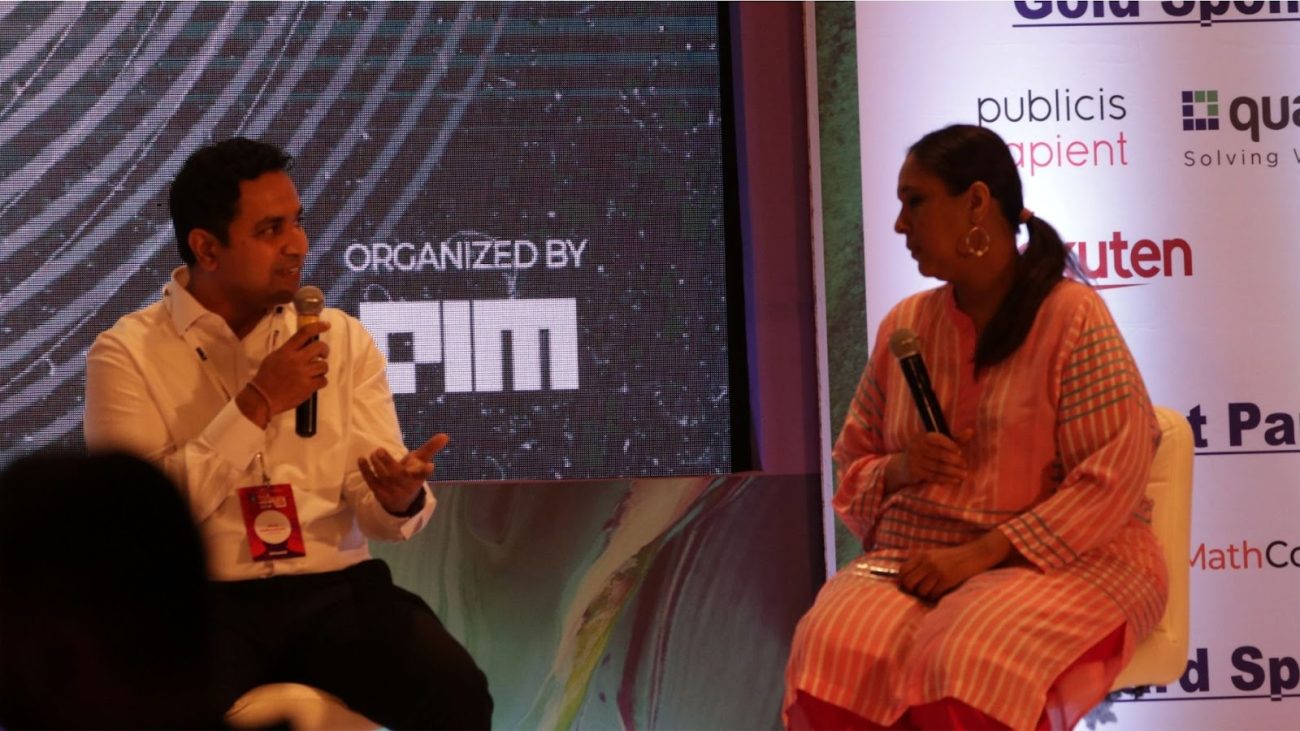
Women dropping out of the workforce
“India today has declining female labour force participation statistics,” said Dutt.
She said despite all the headlines that you see of women leading companies, women sitting on boards, women flying fighter pilots, and women leading news organisations; there are fewer women working in the workforce today than before. “I know; personally, it was a struggle, and in my 20s, I used to get irritated if somebody called me a woman journalist because I would like to be evaluated on my work, and I can compete with any man,” said Dutt.
She said that it took her 60 years to be able to say – ‘hang on, I had to work three times to get to this place, and I am scrutinised three times worse than any of my male colleagues under a microscope the whole time.’ “Women have to grow a skin as thick as the hide of a rhinoceros,” said Dutt, quoting Hillary Clinton from her previous interview.
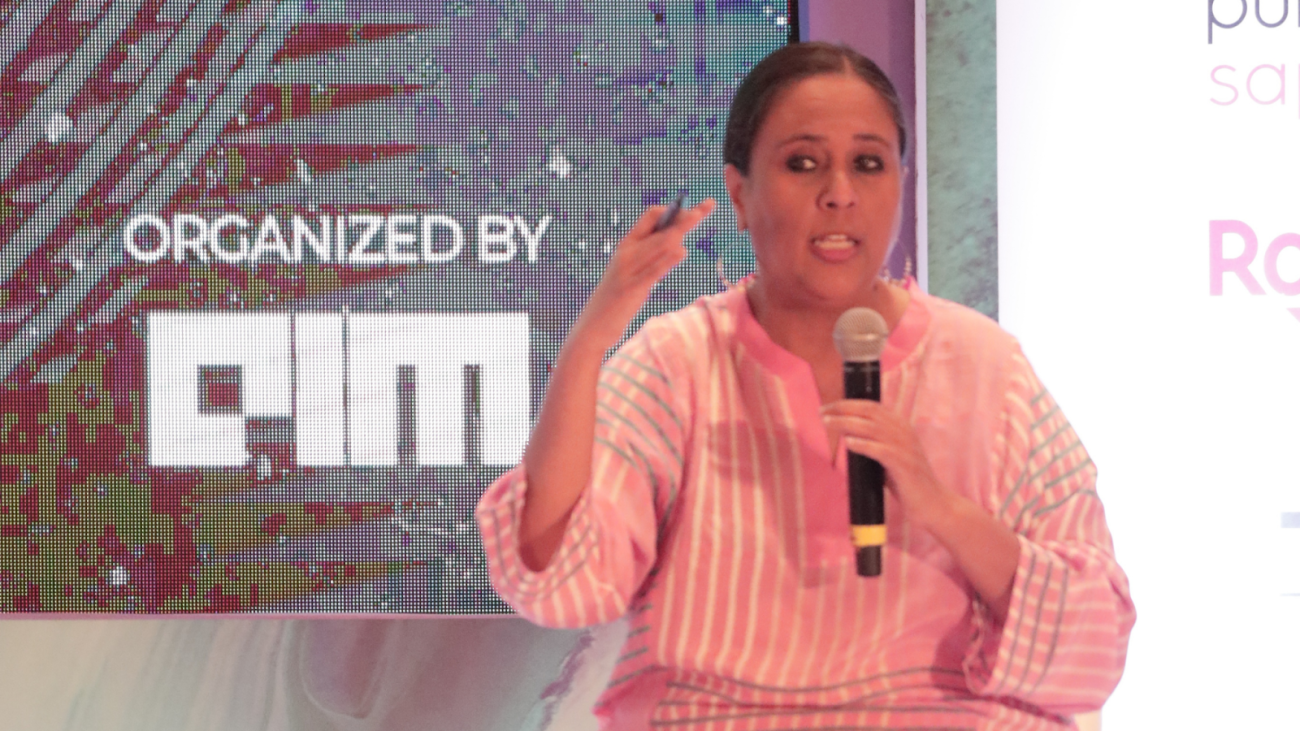
Further, pointing the question to Janardanan, Dutt asked if she owns her gender or dissociates from it. She said that she has gone through these stages multiple times – “the first time I went through the stage was when I was equally standing for an interview for a promotion. The question was, should we give the promotion to her because of the diversity or because she has gone up the mark, where she’s on par with other people. So, that was the question,” inquired Janardanan.
“When I took over as the COO of an organisation, I decided to start the call centre with back-to-work women. I got ten women back to work. Today, as we speak, no one is back,” added Janardanan. She said that this is an attraction in the workforce for women.
Coming back to work after a break
“Melinda Gates, for example, promoted family leave instead of maternity leave at the Gates Foundation, as a way of saying that let’s also get past the stereotypes,” said Dutt.
Lauding one of his employees who recently got promoted after returning from maternity leave, Madhusudanan said: “The problem is there are lots of assumptions that happen; somebody coming back after maternity leave will take some time to settle in.”
Kumar said that her focus has always been on safety in an organisation for 15 years. “I started as a fresher; this is my first organisation. As a fresher, senior manager, working mother, and leader, there were times in my life when I needed that extra support,” she added.
She believes that all women need that support at various stages in their careers. She said that companies should not hire women to change the number of their diversity; they should be taking it out as a mindset to enable and help them grow and sustain their growth within the corporate and build a framework that promotes that. Kumar further threw light on the RISE framework, which is about redefining, inspiring, strengthening, and elevating women across various stages in technology. This framework is not just for women but also talks about LGBTQ+ and under-represented groups.
Further, Kumar said that women coming back from career breaks, especially maternity leave, is tricky as technology is changing rapidly. She said to bridge the gap between where and when they left and now when they are joining, we need to make sure that we give them the kind of environment and the opportunity to grow.
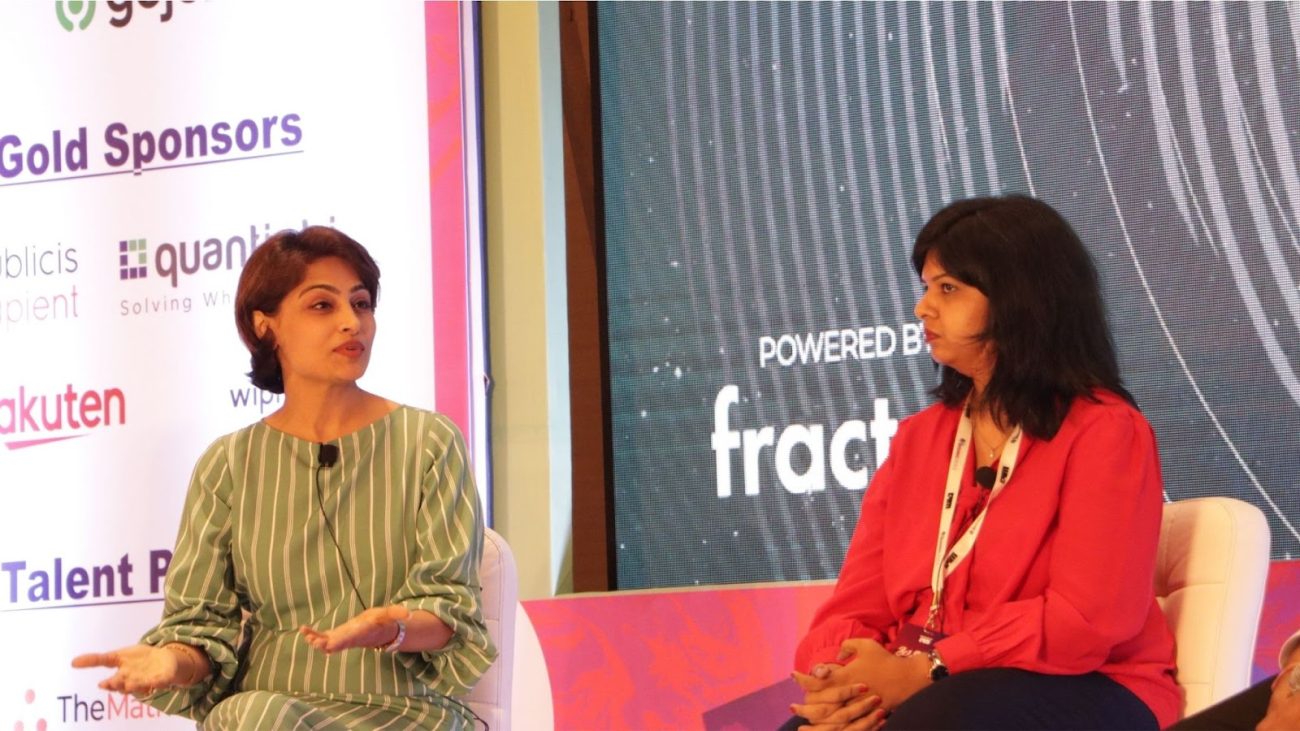
And more…
Further, Dutt asked the panellist about some stereotypes people have about women in the workspace. To this, Madhusudanan said that women couldn’t work extended hours. “These are the assumptions,” he added. Meanwhile, Bhagwat and Kumar said another assumption is that women can’t code.
“For me, I got to understand through this process that you have to put your hands up and say that you can do it, and then they will give you a chance. But, if you keep quiet, you will wait for them to come back to you, and it never happens. That’s a lesson that I unlearn to learn,” said Janardanan.
Finally, when Dutt asked about the changes they would like to see at workplaces – the panellists called for a safe, friendly, gender-neutral, and respectful work environment.


